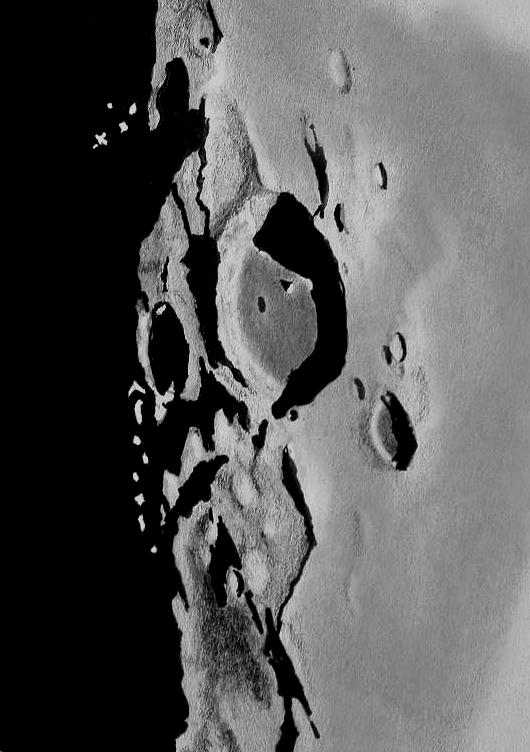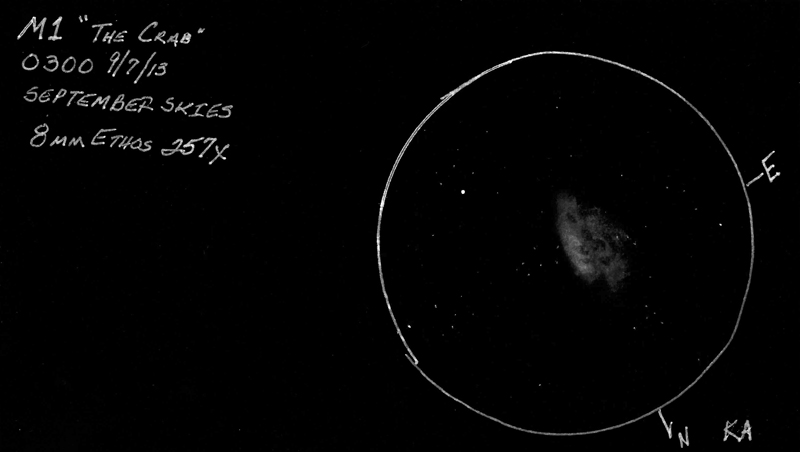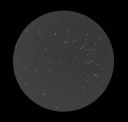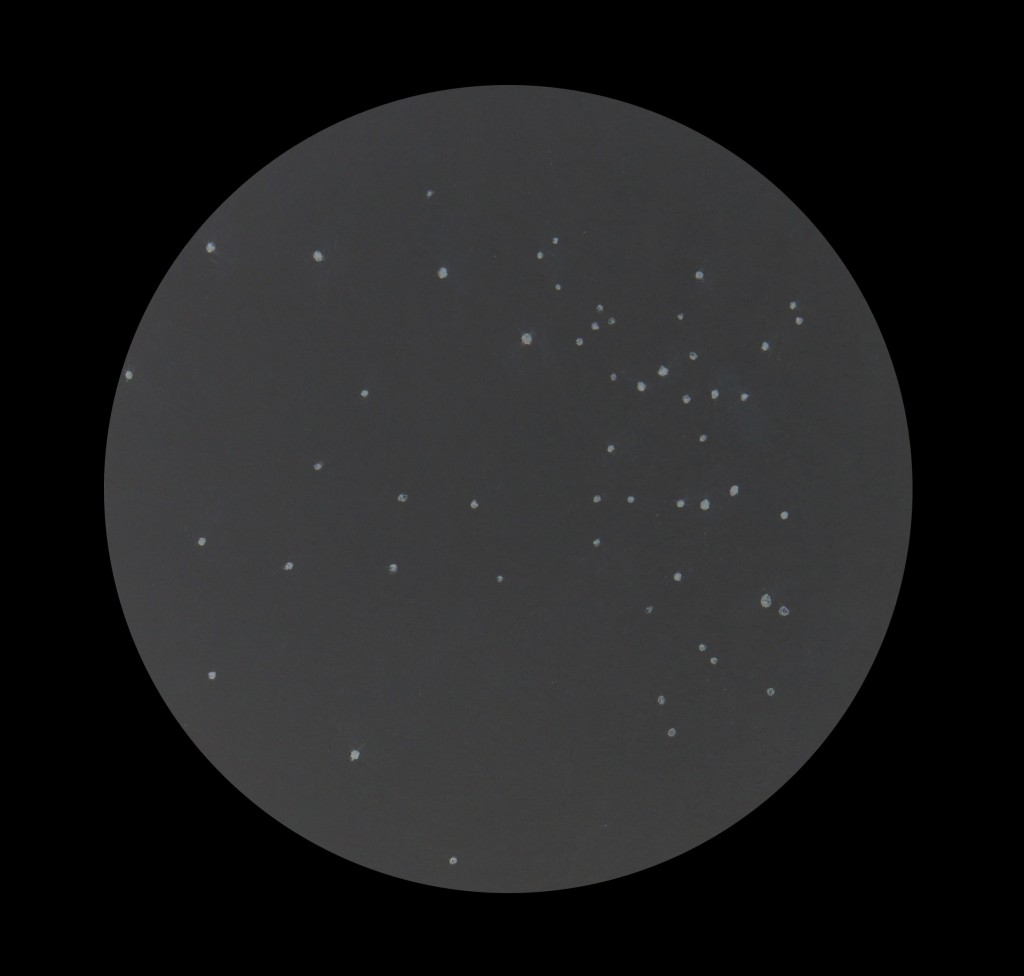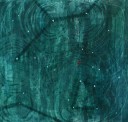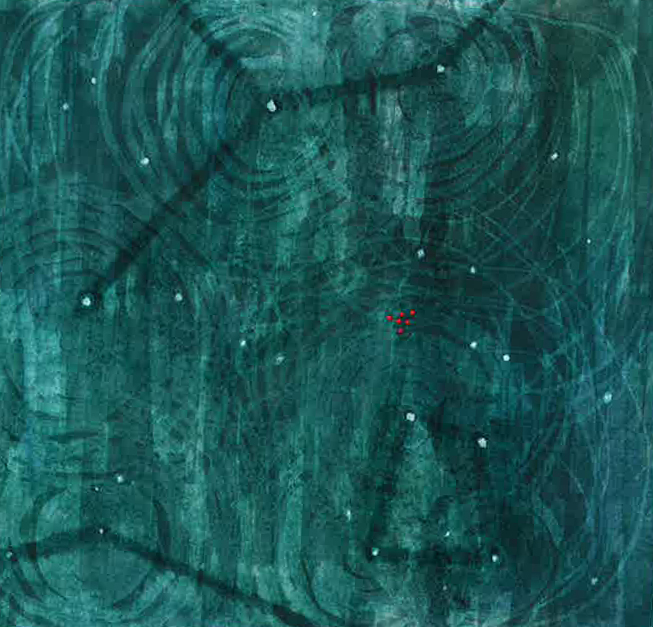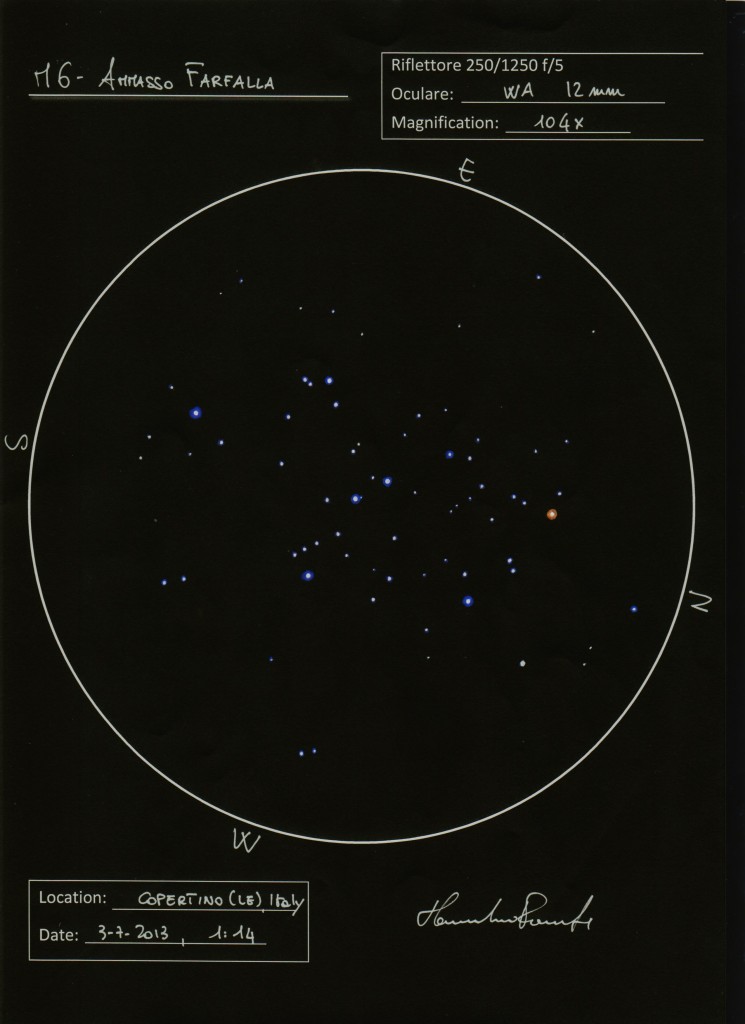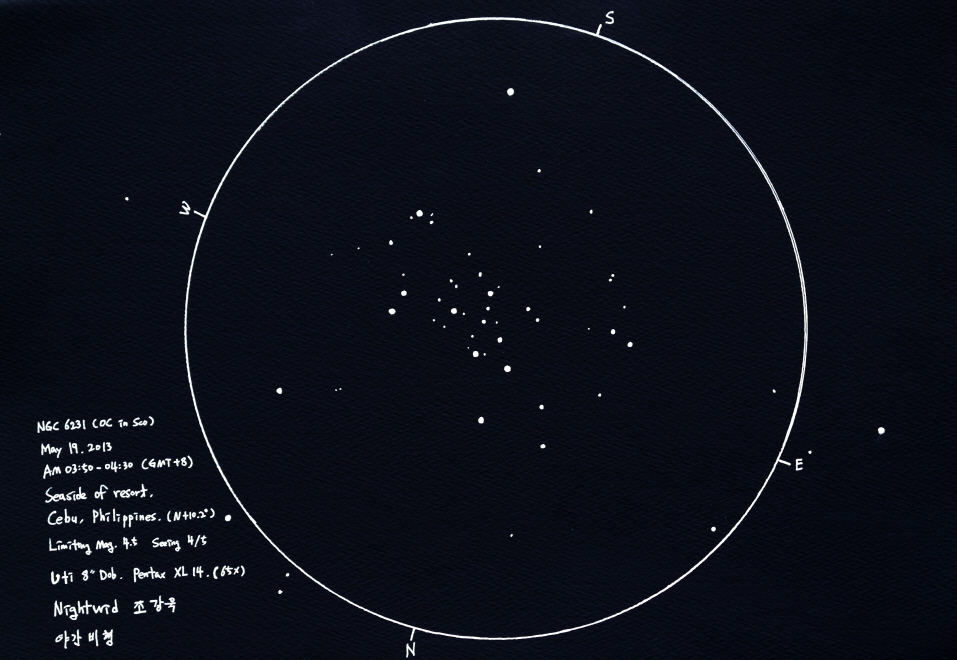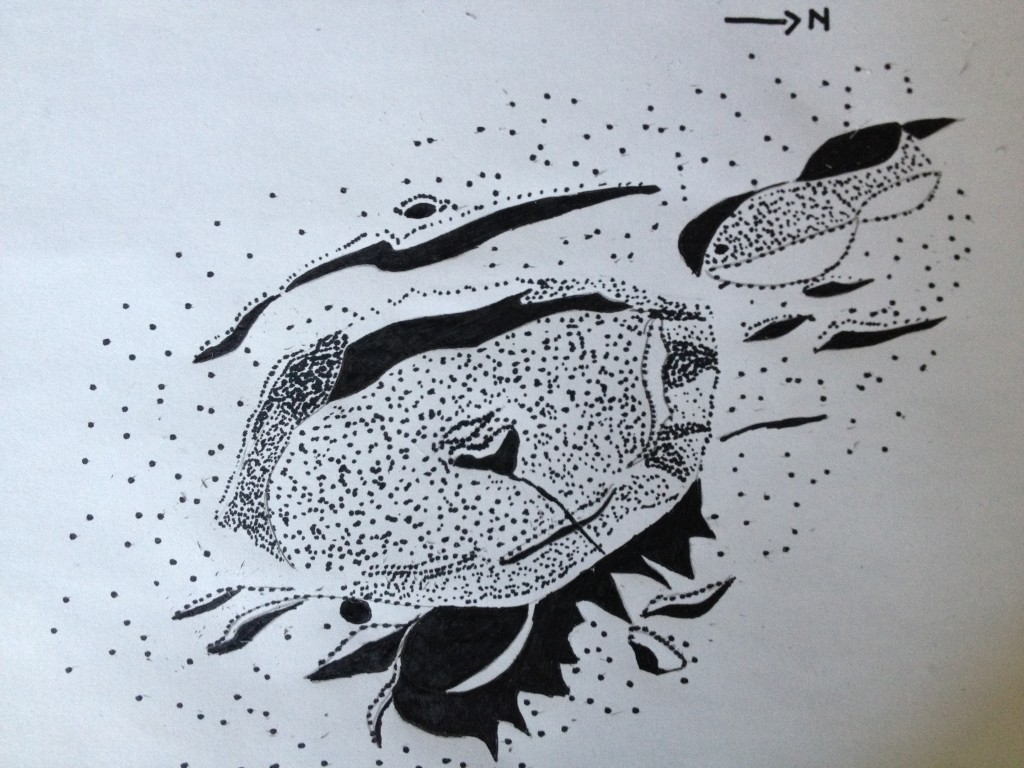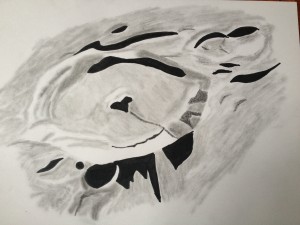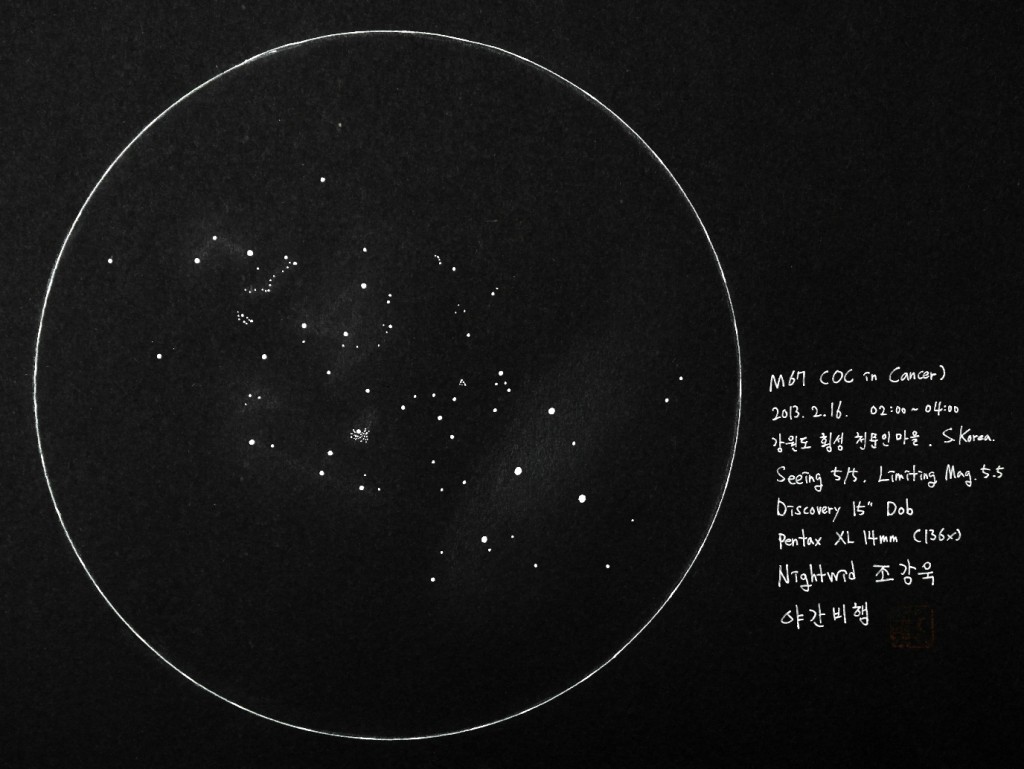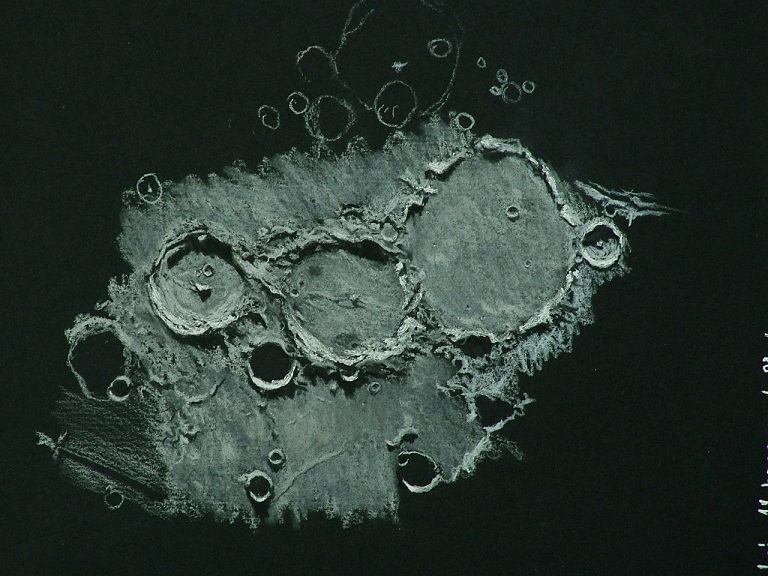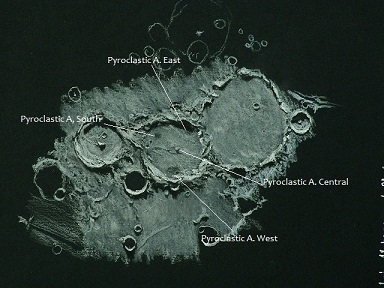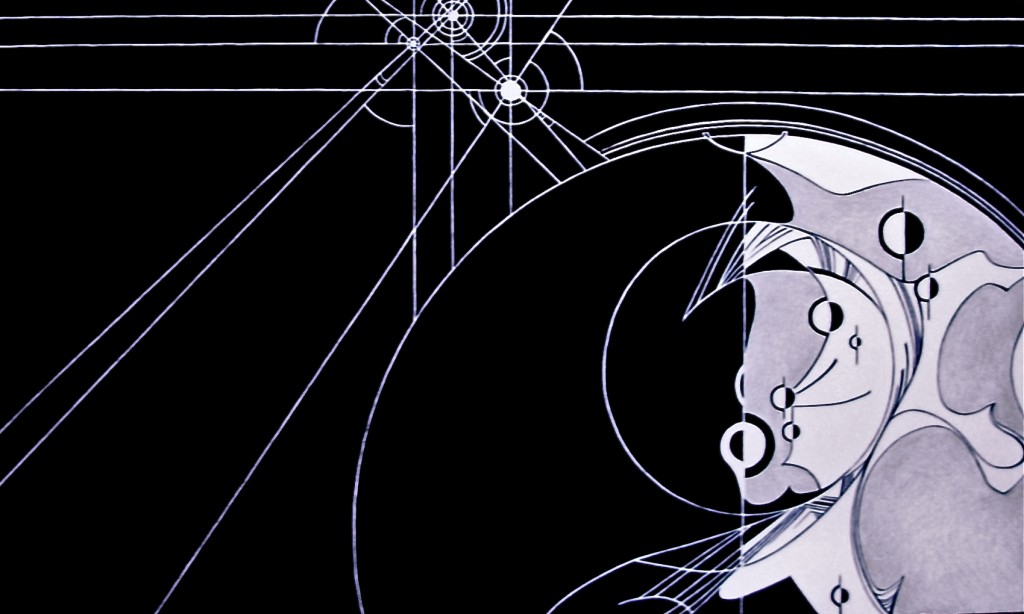
Object Name: First Quarter Moon
Object Type: abstract interpretive sketch of prominent lunar features
Location: Oberlin, Ohio
Date: August-September 2013
Media: Sharpie, ball-point pen, and colored pencil on white paper
As this is the latest addition to my series of abstract astronomy-themed drawings (see more here: http://preshuss1.deviantart.com/gallery/45423007), I used a bit of artistic license in interpreting the lunar features that are shown. Still, I did my best to reference the moon’s actual geography.
The Sea of Rains is the central focus. Framing the craters Archimedes, Aristillus, Autolycus, and Cassini, this ancient volcanic plain is edged from south to north by the Appenine and Caucasus mountains, and capped by the “Alpine Valley.” The northern Mare Frigoris (Sea of Cold) bleeds around the crater Aristotle and into the lakes of Death and Dreams, finally bringing the eye to rest on a Sea of Serenity at lower right. Yes…it’s easy to get carried away by such tantalizing names! Exploring the lunar surface can feel like wandering through a poem…


